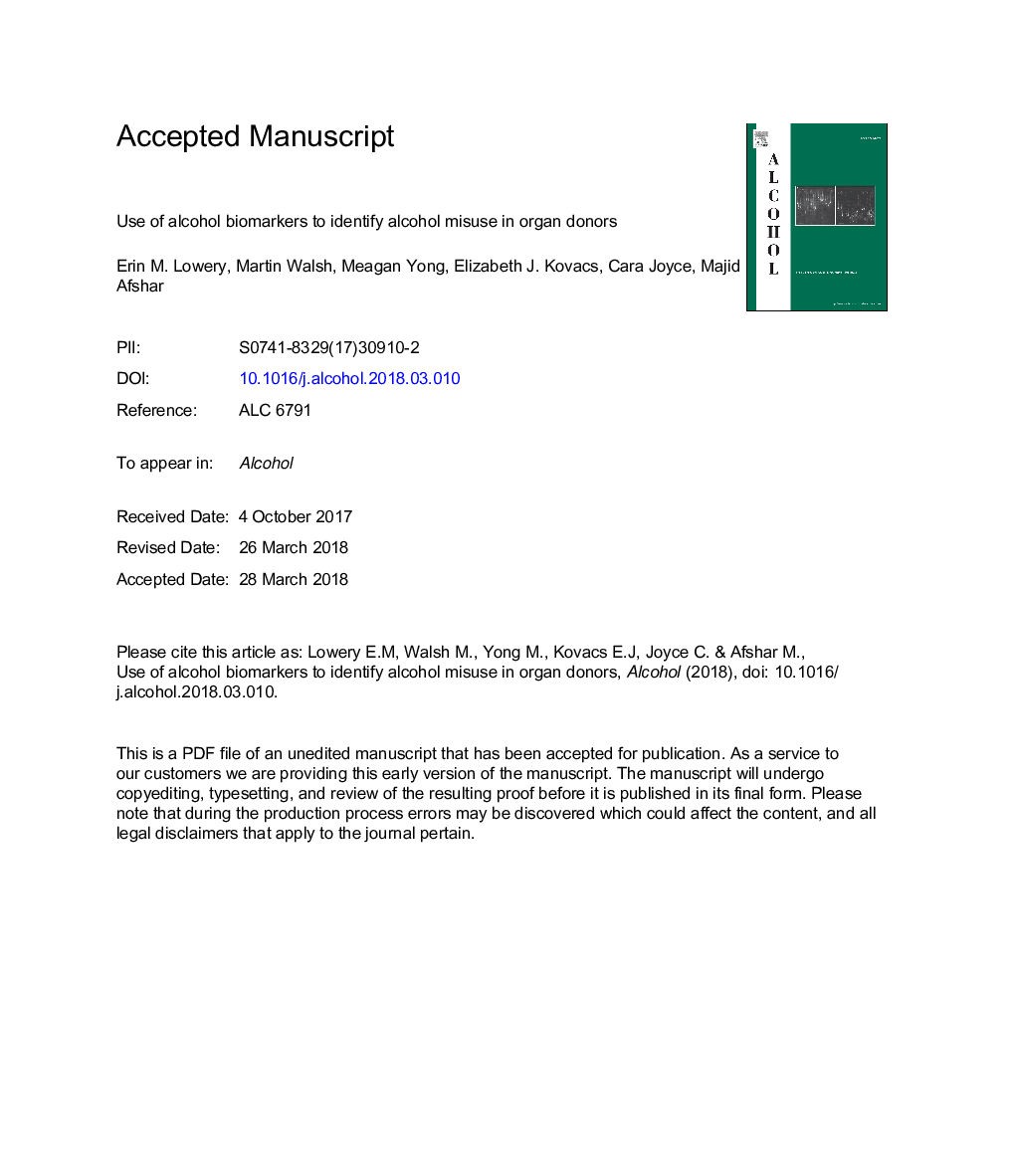| کد مقاله | کد نشریه | سال انتشار | مقاله انگلیسی | نسخه تمام متن |
|---|---|---|---|---|
| 11005462 | 1485957 | 2018 | 25 صفحه PDF | دانلود رایگان |
عنوان انگلیسی مقاله ISI
Use of alcohol biomarkers to identify alcohol misuse in organ donors
ترجمه فارسی عنوان
استفاده از بیومارکرهای الکل برای شناسایی سوء استفاده از الکل در اهدا کنندگان عضو
دانلود مقاله + سفارش ترجمه
دانلود مقاله ISI انگلیسی
رایگان برای ایرانیان
کلمات کلیدی
الکل، اهدا کنندگان ارگان فسفاتیدیلتانول، تخصیص ارگان،
موضوعات مرتبط
علوم زیستی و بیوفناوری
بیوشیمی، ژنتیک و زیست شناسی مولکولی
زیست شیمی
چکیده انگلیسی
Phosphatidylethanol is a direct alcohol biomarker for identifying alcohol misuse. It carries several advantages over other alcohol biomarkers, including a detection half-life of several weeks and little confounding by patient characteristics or organ dysfunction. The aim of this study is to derive an optimal phosphatidylethanol cut point to identify organ donors with alcohol misuse, and to assess the impact of alcohol misuse on organ allocation. Discrimination of phosphatidylethanol was evaluated using the area under the ROC curve from a mixed effects logistic regression model. Phosphatidylethanol had an area under the ROC curve of 0.89 (95% CI 0.80-0.98). A phosphatidylethanol cut point of â¥84 ng/mL provided optimal discrimination for the identification of alcohol misuse with a sensitivity of 75% (95% CI 52.9%-89.4%) and a specificity of 97% (95% CI 91%-99%), a positive predictive value of 82% (95% CI 59%-94%), and a negative predictive value of 95% (95% CI 89%-98%). In deceased organ donors who had been critically ill, phosphatidylethanol had good test characteristics to discriminate alcohol misuse. Other alcohol biomarkers performed poorly in deceased organ donors. Liver allocation was decreased in donors with alcohol misuse by proxy history, but not in those with phosphatidylethanol >84 ng/mL, revealing possible information bias in liver allocation.
ناشر
Database: Elsevier - ScienceDirect (ساینس دایرکت)
Journal: Alcohol - Volume 73, December 2018, Pages 67-72
Journal: Alcohol - Volume 73, December 2018, Pages 67-72
نویسندگان
Erin M. Lowery, Martin Walsh, Meagan Yong, Elizabeth J. Kovacs, Cara Joyce, Majid Afshar,
